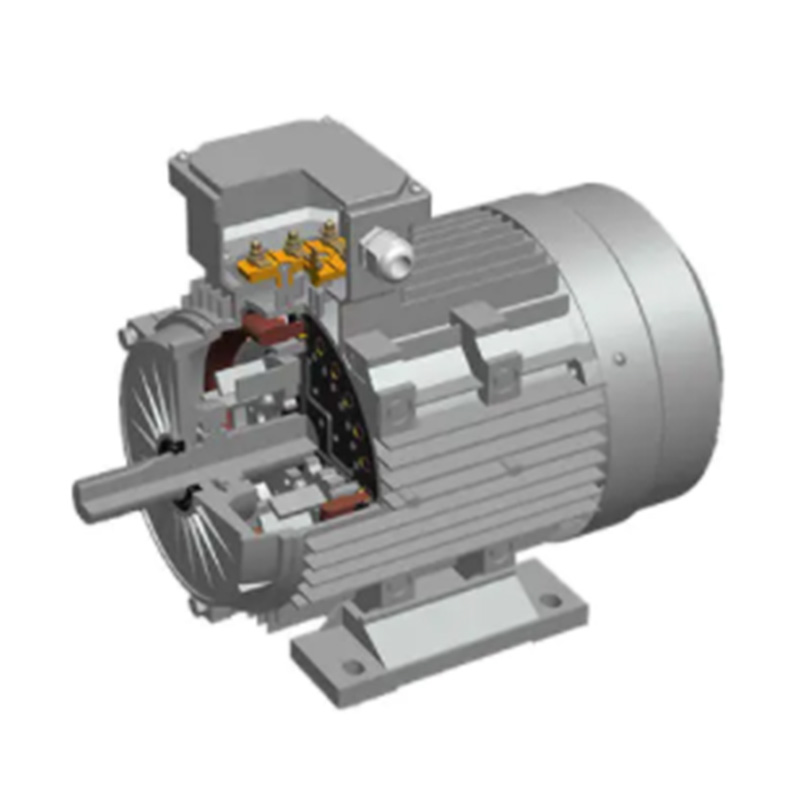The main analysis points of the vibration motor industry market competition analysis report include:

1. Competition within the vibration motor industry. There may be several reasons for intensifying internal competition in the industry:
First, the industry is growing slowly and the competition for market share is fierce;
Second, there are many competitors and the competitive power is roughly equivalent;
Third, the products or services provided by competitors are roughly the same, or only rarely show obvious differences;
Fourth, for the benefit of economies of scale, some enterprises have expanded their production scale, the market balance is broken, and there are a large amount of products surplus, and enterprises have begun to resort to price cuts and sales.
2. Bargaining power of customers in the vibration motor industry. Industry customers may be consumers or users of industry products, or they may be buyers of products. Customers' bargaining power is reflected in whether it can prompt the seller to lower prices, improve product quality or provide better services.
3. The bargaining power of suppliers in the vibration motor industry is reflected in whether suppliers can effectively prompt buyers to accept higher prices, earlier payment times or more reliable payment methods.
4. The threat of potential competitors in the vibration motor industry. Potential competitors are targeted by companies that may enter the industry to participate in competition. They will bring new production capacity and share existing resources and market share. As a result, the industry's production costs will increase, market competition will intensify, product selling prices will decline, and industry profits will decrease.
5. The pressure of alternative products in the vibrating motor industry refers to the product competition pressure that has the same function or can meet the same needs and can replace each other.
The market competition analysis report of the vibration motor industry is a research result that analyzes the market competition status of the vibration motor industry. Market competition is the basic characteristic of the market economy. Under the conditions of the market economy, enterprises compete based on their respective interests to obtain better production and sales conditions and obtain more market resources. Through competition, enterprises can survive the fittest and thus achieve the optimal allocation of production factors. Research on the market competition in the vibration motor industry will help enterprises in the vibration motor industry understand the intensity of the industry and master it
Its competitive position and competitors in the vibration motor industry provide a basis for formulating effective market competition strategies.
The AC synchronous permanent magnet electric motor has become a fundamental component in various modern technologies due to its well-balanced performance characteristics and adaptability. Frequently found in electric vehicles, industrial machinery, automation systems, and household appliances, this motor type combines efficient energy use with precise control and reliable operation. The advantages of an AC synchronous permanent magnet motor arise from its distinctive design, operational principles, and integration with advanced control systems.
An AC synchronous permanent magnet motor operates on the principle of synchrony between the stator's rotating magnetic field and the rotor's magnetic field, which is produced by permanent magnets rather than field windings. The stator, energized by a three-phase alternating current, generates a rotating magnetic field. This field interacts with the rotor's magnetic field, causing the rotor to spin at the same frequency as the stator's field. Because the motor does not rely on slip or induction for rotation, it maintains a fixed speed under steady-state conditions, which is particularly advantageous for applications requiring precise and consistent operation.
Permanent magnets in the rotor eliminate the need for external excitation or brushes, simplifying the structure and contributing to reduced wear and energy consumption. This straightforward yet effective configuration forms the foundation for many of the motor's key benefits.
One of the primary advantages of an AC synchronous permanent magnet motor is its high efficiency. The use of permanent magnets eliminates rotor copper losses that are commonly found in induction motors. As a result, less electrical energy is converted into heat, enhancing overall energy conversion efficiency.
This efficient operation is particularly beneficial in electric vehicle applications, where battery utilization is essential. In industrial contexts, the use of high-efficiency motors contributes to energy savings, operational cost reduction, and improved system productivity. Reduced energy loss also supports more compact and thermally stable motor designs, which can be advantageous in enclosed or temperature-sensitive environments.
Consistent Torque and Speed Characteristics
Another important feature of AC synchronous permanent magnet motors is their ability to provide consistent torque and stable speed. The synchronous operation ensures that the rotor rotates at the exact speed of the stator's magnetic field, which allows for precise speed control without slip.
This is especially useful in motion control systems where accuracy is essential, such as robotics, precision manufacturing, and automation lines. The motors are also capable of delivering high torque at low speeds, which is a favorable characteristic for electric propulsion and applications involving heavy starting loads or variable operating conditions.
Moreover, when combined with suitable electronic controllers, these motors support a wide operating range, offering performance flexibility that suits diverse load demands without compromising stability or responsiveness.
Thanks to the absence of brushes and the balanced electromagnetic interaction between rotor and stator, AC synchronous permanent magnet motors often operate with low vibration and minimal acoustic noise. This characteristic is valuable in applications where a quiet working environment is preferred, such as in residential heating and cooling systems, medical devices, or laboratory equipment.